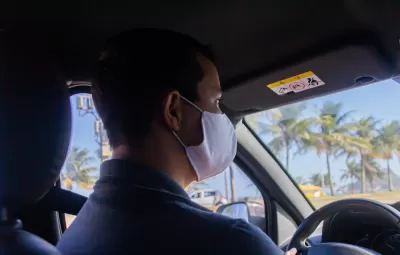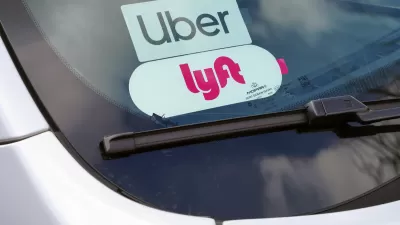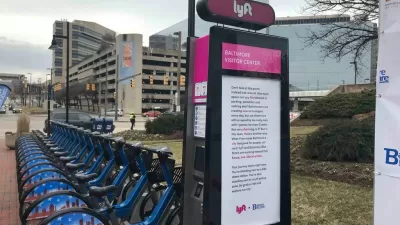With pooled services suspended through the pandemic and research showing most users prefer private rides, will shared rides continue to play a role in urban transportation?

As ride-hailing companies like Uber and Lyft faced backlash for producing more urban congestion with single-passenger trips, "pooled service seemed to offer a more city-friendly product," and autonomous vehicle producers also designed multi-person pods in preparation for a future of shared-ride transit. But with shared services largely on hold since the start of the pandemic, David Zipper, writing in Bloomberg CityLab, asks whether shared transportation can recover.
Back in February 2018, the nonprofit World Resources Institute unveiled the Shared Mobility Principles for Livable Cities, a set of guidelines that "included a commitment that autonomous vehicles would offer only shared trips within urban areas," according to Zipper. Since then, "a slew of evidence suggests that those who can afford to hail a vehicle would really prefer to have it to themselves," which is "worrisome news for public officials who hoped shared rides could help curb congestion — and for mobility companies who’ve pointed to sharing as a reason their products wouldn’t condemn cities to gridlock." While "sharing trips with strangers is the basic principle behind riding public transportation," sharing rides in private vehicles feels different than larger conveyances like trains or buses. "In a bad situation, you’re more likely to feel trapped in a ride-hail vehicle," making some users more reluctant to use shared rides even outside the public health risks posed by the pandemic.
Without policies to incentivize shared travel through increased convenience or lower cost, the dream of autonomous shared transit could devolve into a growing number of "individual AV trips grinding urban streets to a halt."
FULL STORY: Can Shared Mobility Survive the Pandemic?

Study: Maui’s Plan to Convert Vacation Rentals to Long-Term Housing Could Cause Nearly $1 Billion Economic Loss
The plan would reduce visitor accommodation by 25,% resulting in 1,900 jobs lost.

North Texas Transit Leaders Tout Benefits of TOD for Growing Region
At a summit focused on transit-oriented development, policymakers discussed how North Texas’ expanded light rail system can serve as a tool for economic growth.

Why Should We Subsidize Public Transportation?
Many public transit agencies face financial stress due to rising costs, declining fare revenue, and declining subsidies. Transit advocates must provide a strong business case for increasing public transit funding.

How to Make US Trains Faster
Changes to boarding platforms and a switch to electric trains could improve U.S. passenger rail service without the added cost of high-speed rail.

Columbia’s Revitalized ‘Loop’ Is a Hub for Local Entrepreneurs
A focus on small businesses is helping a commercial corridor in Columbia, Missouri thrive.

Invasive Insect Threatens Minnesota’s Ash Forests
The Emerald Ash Borer is a rapidly spreading invasive pest threatening Minnesota’s ash trees, and homeowners are encouraged to plant diverse replacement species, avoid moving ash firewood, and monitor for signs of infestation.
Urban Design for Planners 1: Software Tools
This six-course series explores essential urban design concepts using open source software and equips planners with the tools they need to participate fully in the urban design process.
Planning for Universal Design
Learn the tools for implementing Universal Design in planning regulations.
Ascent Environmental
Borough of Carlisle
Institute for Housing and Urban Development Studies (IHS)
City of Grandview
Harvard GSD Executive Education
Toledo-Lucas County Plan Commissions
Salt Lake City
NYU Wagner Graduate School of Public Service





























